Blog
Buccal Corridors – What are they?
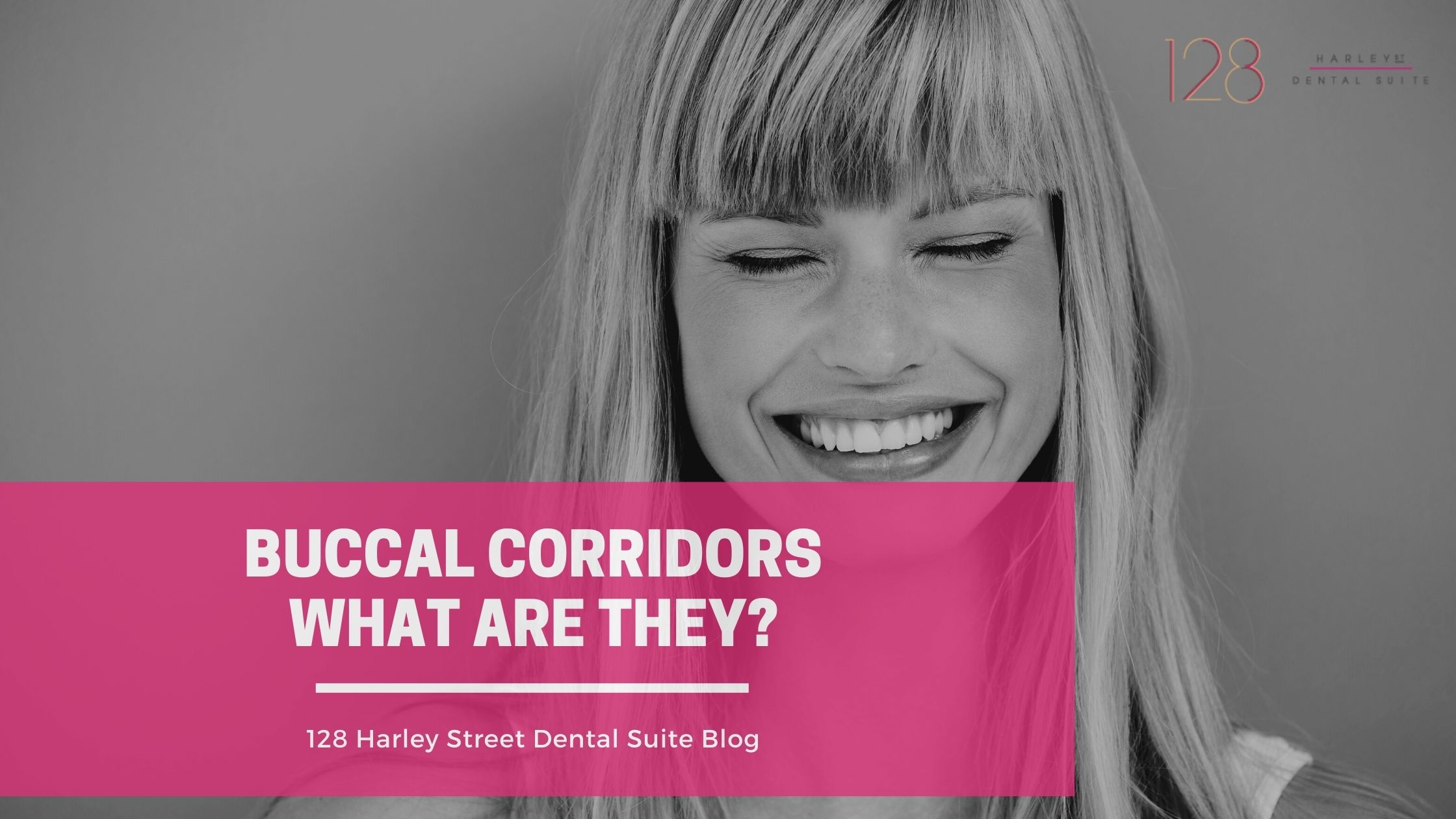 Orthodontics is the speciality that specifically deals with improving the aesthetics of your smile. Physical attractiveness plays an important role in how we view ourselves and how we are viewed by others.
Orthodontics is the speciality that specifically deals with improving the aesthetics of your smile. Physical attractiveness plays an important role in how we view ourselves and how we are viewed by others.
Our smile is a major determinant of the overall physical attractiveness and at 128 Harley Street Dental Suite we have only specialists at a Consultant Level providing this specialism of dentistry.
It is a known fact that people mainly focus on other people’s eyes and smiles during interpersonal interaction, with little time spent on other facial features. For the general public, the smile ranks second only to the eyes as the most important feature in facial attractiveness highlighting the importance of having a nice smile.
Our Smiles have different components that render them attractive. One of the most important factors is the buccal corridors.
Buccal corridors are defined as the space between the buccal surfaces of the maxillary teeth and the corners of the mouth during a smile. Their size plays a very important role. It is for this reason that at 128 Harley Street Dental Suite we place a lot of importance in expanding the upper arch to a reasonable level as broader smiles with no Buccal Corridors are more attractive than smiles with Buccal Corridors.
Other important factors to improve smile attractiveness is the symmetry between your left and right parts of your smile. The more symmetrical the nice and more attractive your smile is.
As we age our perception of what we deem attractive remains unchanged and therefore the smile attractiveness does not change as we age.
At our practice we first start with a consultation to investigate the reason for a Narrow Smile. This would lead to an increased in “negative mouth space” and hence an increased buccal corridor space. This can be caused by the width of the top jaw, misalignment of the upper teeth and/or missing teeth. This can in turn lead to unsupported muscles of the cheeks and lips eventually giving a more aged appearance and hence a less attractive smile. This also creates an illusion that the front teeth look too prominent or they stick out as the front teeth take prominence in your smile and are more noticeable than if your top arch was symmetrically rounded from front to back.
At 128 Harley Street Dental Suite we have several appliances that could help us manage such circumstances and your cooperation with wearing them and maintaining good level of cleaning is paramount for success. We are also able to place wire of big-enough dimensions to allow this correction. If your case is one where your jaw is too narrow, we need to widen it in order to make room for the teeth to be properly spaced. The only true, effective way to do this is with the use of palatal expanders.
We have published various other blogs about these type of expanders however if you have any queries about this please do not hesitate to contact us.
Aesthetics and beauty is a personal matter however it is important that you are happy with your new smile and more importantly notice an improvement with the treatment chosen.
Do I have a crossbite?
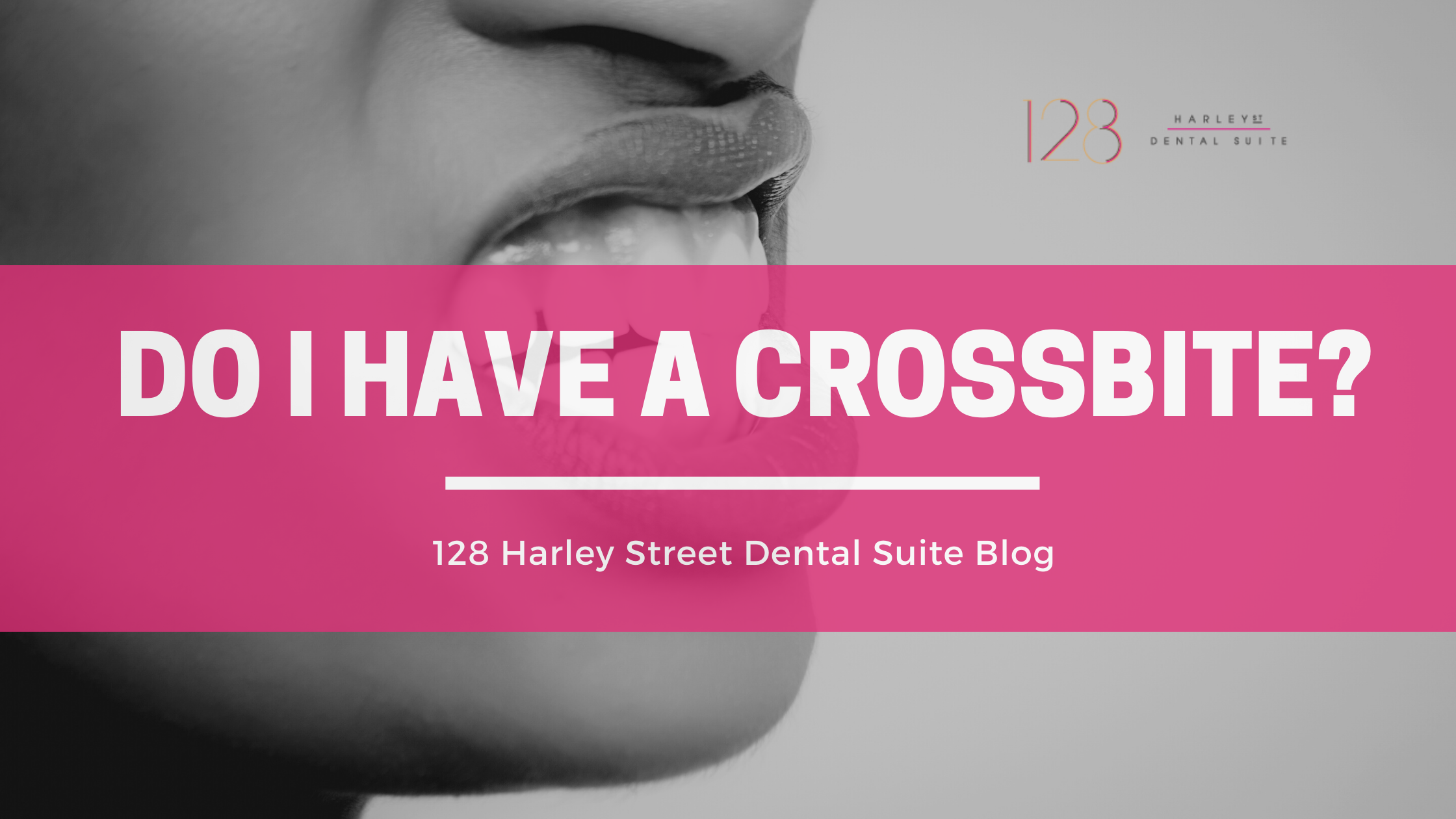
A crossbite is a type of bite problem due to misalignment of teeth between the top and the bottom teeth.
If you have a crossbite the upper teeth fit inside of lower teeth instead of the other way around. The top teeth should always close over the bottom teeth. This misalignment can be minimal or more extensive. If it is a mild crossbite it will affect a single tooth however if it is more significant it will involve groups of teeth, involving the front teeth, back teeth, or both.
Types of crossbite
- “Back” or Posterior crossbite is when the back teeth are affected, upper teeth sit inside of bottom teeth.
- “Front” or Anterior crossbite is when the front teeth are in crossbite, one or more top teeth sit behind the bottom teeth.
This should not to be confused with an underbite, when all the top teeth, or jaw, are behind the bottom teeth. This is a different bite problem and although the two can be related the cause of the problem could be very different.
At 128 Harley Street Dental Suite, all the assessments are done by specialist dentists in Orthodontics who have specific qualifications and training in orthodontics and will be able to assess your type of problem from the outset.
You do not have a crossbite if your teeth are lined up correctly and the upper teeth which are naturally wider lay on the outside of the bottom teeth.
Causes of a crossbite
A crossbite can occur from a discrepancy between the size of the top and bottom teeth or in the jaw sizes. Genetics could also play a role whilst if you didn’t look after your baby teeth when you were younger and they were lost early the adult teeth might not grow in the right position. On the other hand, if you lost your baby teeth quite late it can lead to abnormal eruption of permanent teeth.
Other causes include even habits like thumb sucking or swallowing in an abnormal way which can generate damaging pressure from the cheek muscles which might push the top teeth to the inside of the bottom teeth.
Do I need to correct a crossbite?
A crossbite may reveal an underlying jaw or bite problem and is best addressed. There is no specific age when this can be done however the younger the age, whilst your face and jaws are still developing, could allow for a less lengthier process. Leaving the crossbite untreated can cause difficulty eating, and your smile aesthetics can be compromised especially if this is visible.
How can I have my crossbite corrected?
Depending on the scope of the crossbite, treatment may involve the use of a top jaw expansion device called a palatal expander. This can be of a fixed or removable type with the primary intention will be to make the upper jaw wider. This would be used alongside an appliance designed to move the teeth, such as braces or clear aligners.
A trained orthodontic specialist dentist such as Dr Stefan at 128 Harley Street Dental Suite, will know which method will suit you best and will also help you determine which is best for you.
Which orthodontist shall I make an appointment with?
When you choose an orthodontist at 128 Harley Street Dental Suite for your orthodontic treatment, you can be assured that you have selected a highly skilled specialist. Orthodontists are experts in orthodontics, coordinating bites and dento-facial orthopaedics, ensuring properly aligned teeth and jaws. Specialist dentists in orthodontics also possess the skills and experience to give you your best smile.
How to Find the Best Orthodontist
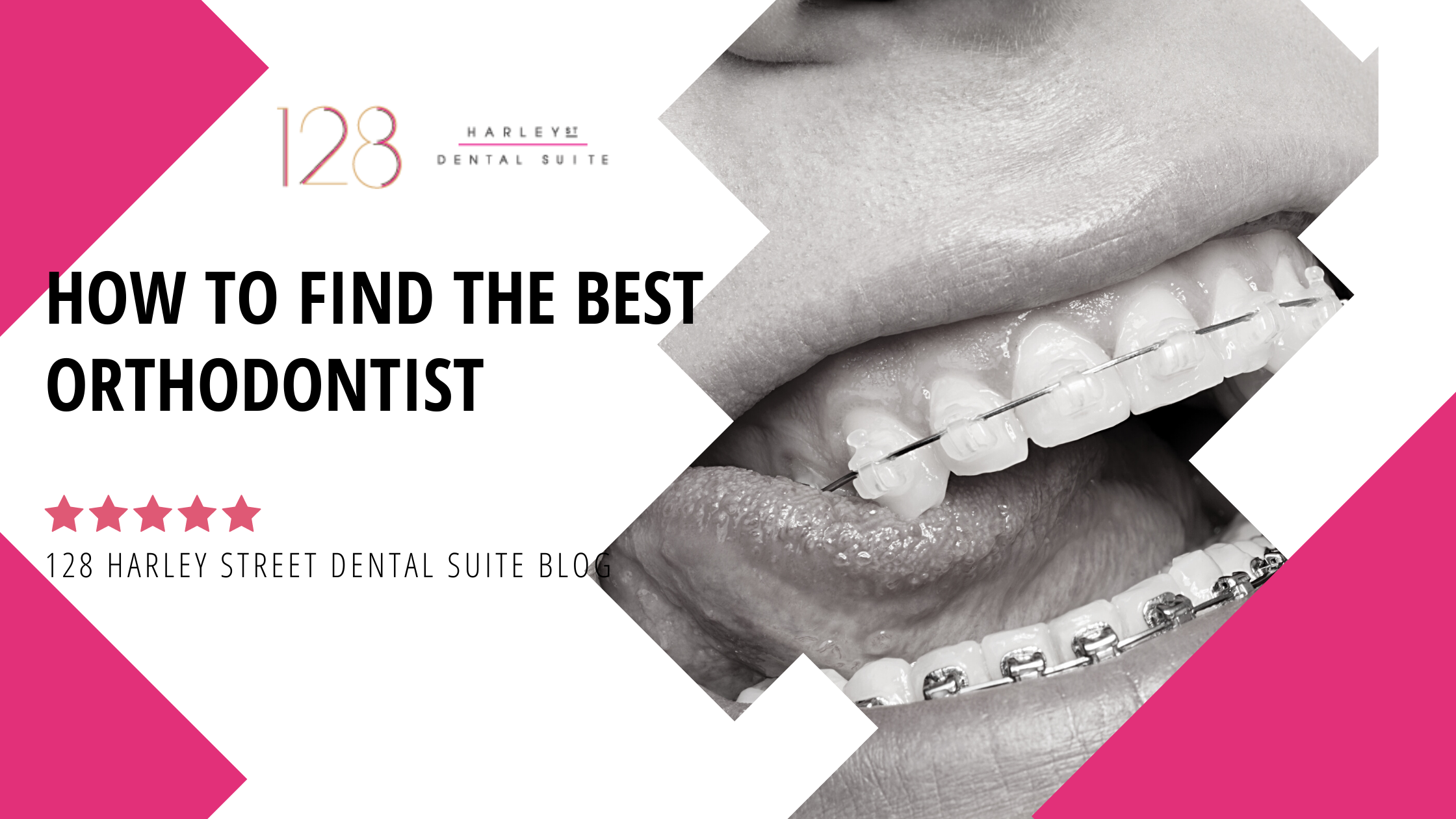
More and more people in the UK are seeking orthodontic treatment and 75% of orthodontists have reported an increase in adult patients. Orthodontic treatments like braces or Invisalign are gaining in popularity as people want to straighten their teeth.
If you want to find the best orthodontist in London, there are things you should look out for. Read on for some tips on how to find the best orthodontist in London.
Ask for Recommendations
One of the best ways to learn about orthodontists in your area is to ask for recommendations from friends and family. Ask them who they’ve had experience with and would recommend (or avoid) and go from there. Word of mouth advertising from satisfied customers is one of the best marketing tools orthodontists have, so ask around!
Research Their Experience
Once you get some recommendations, do your own research. Learn about where they went to school, how long they have been in practice, and what types of dental work they do. If you want something like Invisalign, but that’s not their speciality, you might want to look elsewhere.
You should also read online reviews and check for any testimonials they may list on their site.
Verify Their Credentials
Legally, all dentists and orthodontists must be registered with the General Dental Council and Care Quality Commission. Make sure they are registered and check their other credentials. At 128 Harley Street Dental Suite, our orthodontists specialise in high-quality treatment and participate in continuing education to learn the latest techniques and updates in orthodontics.
Location and Convenience
If your treatment plan consists of many different appointments, you’ll want a location that is convenient for you to get to. Consider when you might be doing the appointments and choose one that is close to home or to work, depending on when you might go.
You also want to check on their appointment scheduling and whether it will work for your schedule. Do they have early morning appointments or evening appointments? If you have to go regularly for adjustments to orthodontic work, can you schedule these all ahead of time so you have a few months worth of appointments already on your calendar?
Meet With Them
It is standard to meet with an orthodontist for a consultation. They can review your dental records, discuss your options, and layout a potential treatment plan. Here are some of the questions you should ask them:
- How many appointments will this take?
- How long will my treatment take?
- How much will it cost?
- What payment plan options do you have?
- How will my teeth look after the treatment is done?
- Do you accept insurance?
- Do you have pictures of past patients you can show me?
Find the Best Orthodontist in London
Don’t just settle for any orthodontist. Make sure the person you selected specialises in what you need to have done to your teeth and has plenty of experience. A good orthodontist will be able to give you an idea of what you can expect, how long it will take, and what you can realistically expect from your treatment.
If you are ready to learn more about straightening your teeth with Invisalign, check out the special offers we have available and click on “I want this” for more information.
How to Get Straight Teeth: Effective Solutions for a Perfect Smile
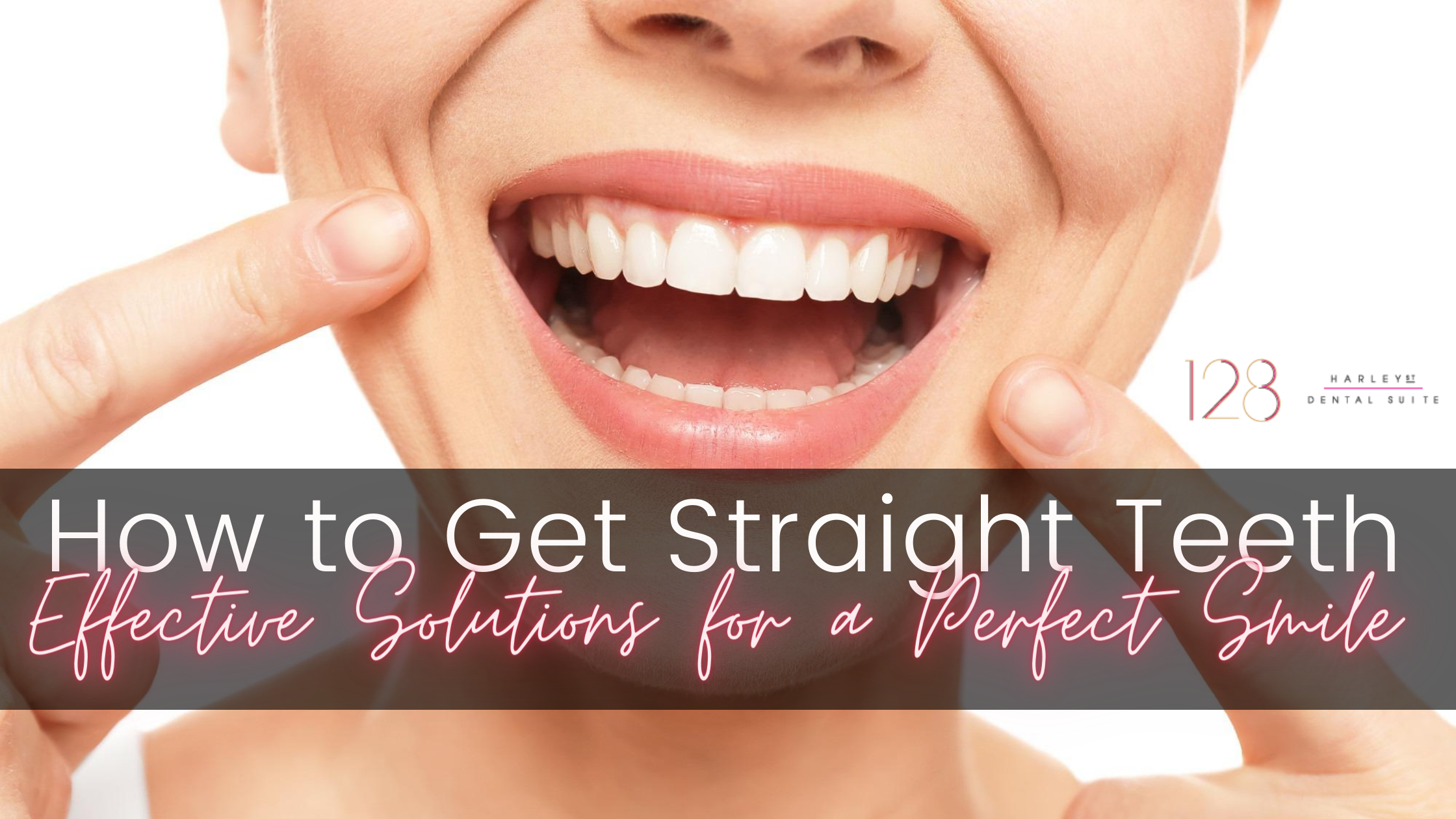
Not so happy with the state of your teeth? If so, you’re not alone; a study found that as many as four in 10 UK adults share the sentiment. So much so that 47% of the study’s participants said they’ve turned to cosmetic dentistry.
This doesn’t mean that the myth about the British having bad teeth is true, though. Compared to folks in the US, the Brits seem to be better in keeping their teeth. In the UK, the average number of lost teeth is 6.97, while it’s 7.31 in the US.
With all that said, you should learn how to get straight teeth, as a proper bite is essential to your oral health. Crooked teeth, after all, can make you prone to tooth decay and even gum disease.
Ready to familiarise yourself with some of the top methods for straightening teeth? Then let’s get right into it!
How to Get Straight Teeth Even as an Adult
In the UK, about one in three children require orthodontic or teeth-straightening treatment. In line with this, the National Health Service says that the ideal age for kids to have braces is around 12 or 13 years. It’s during this age, after all, that the mouth and jaws are still developing.
During this age, the gums and bones are still soft and pliant. This then makes it easier for orthodontic appliances to move and “adjust” the teeth.
All this, however, doesn’t mean you can no longer get straight teeth as an adult. No matter your age, orthodontic treatment will move your teeth through physiological forces. It will take more time, but still, braces can fix alignment problems affecting adult teeth.
When Do Teeth Start to Straighten With Braces?
It won’t be visible from the get-go, but the teeth begin to move from the very first day of treatment. That’s why it’s normal to feel some discomfort within the first 24 hours of wearing braces. That comes from the pressure that the orthodontic appliance exerts on the teeth and bone.
Depending on the type of braces you get, the treatment may take anywhere from 12 to 24 months. This also depends on the severity of your teeth’s misalignment. Recent studies, however, found that fixed braces have an average treatment time of 19.9 months.
Have Braces Worked on Crowded Teeth?
Yes! Teeth crowding is actually one of the most common problems that dental braces can fix. It is, after all, a condition that has an estimated global prevalence of between 30% and 60%.
The “Unnoticeable” Way To Straighten Teeth
As effective as fixed orthodontic appliances are, these “train-track” braces do have drawbacks. Since they’re not removable, you’d need to pay more attention to your oral hygiene habits. Otherwise, your risks for getting cavities will go up.
In addition, you may feel a tad bit shy to wear “train-track” braces, as these are metal appliances.
In this case, one of your best options is to see an Invisalign London specialist. As its name suggests, “Invisalign” is an almost-invisible aligner made of specialised plastic. It’s so clear that other people may not even notice you have them on!
Invisalign is also removable, which then makes it easier for you to keep up with proper oral hygiene. You can brush, floss, and gargle without the constrictions of metal braces.
Invisible Braces Before and After
128 Harley Street Dental Suite is a — you guessed right — Invisalign Harley Street specialist. Our dental team consists of orthodontists specialising in all things braces.
We have a gallery of before and after photos that you can check at your convenience. Please feel free to check these photos out! This way, you can see the difference that our treatments, such as Invisalign, can make.
Buying Retainers to Straighten Teeth Online
Retainers are usually for “retaining” the teeth’s position following a full orthodontic treatment. Like Invisalign, most retainers are also removable. Rather than straightening teeth, they maintain the straightness of braces-treated teeth.
Some people ask us here at 128 Harley Street Dental Suite if retainers alone can fix bite issues. If the teeth misalignment is minor, then the fixed type of retainer may help. These bonded retainers have wires that go at the back of the front teeth.
Cheapest Way to Straighten Teeth in the UK
Invisalign may be the most cost-effective treatment option for straightening the teeth. That’s because the entire quoted price is already for both the upper and lower teeth.
For example, here at 128 Harley Street Dental Suite, our Invisalign treatment plans start at £1,995. This can still go up, depending on how complicated the case is. However, the price that we will quote you already includes all aligners you’ll need to wear.
Let’s say that your crooked or overcrowded teeth are only either on the upper or lower teeth. In this case, our conventional braces may be the most affordable treatment for you. Our treatment programs for fixed braces usually start at £1,495 per arch.
Putting Veneers on Crooked Teeth: Does It Work?
You may have heard that veneers are amongst the top ways on how to straighten your teeth without braces. To a certain extent, they can, such as in the case of minor overlapping or crooked teeth. That’s because these ultra-thin porcelain shells require reshaping the teeth first.
Once reshaped, the veneer then goes on top of the treated teeth. The result is a tooth that mirrors the shape, size, and alignment of the rest of your pearly whites.
How About Dental Bonding to Get Straight Teeth?
Another option to straighten teeth without braces is dental or composite bonding. It involves using resin materials placed in strategic areas of crooked teeth. This then acts as a sort of masquerade to hide minor teeth crookedness.
Opt for Dental Braces to Fix Any Kind of Teeth Alignment Issues
As you can see, there are many ways on how to get straight teeth, but braces are still king. This is especially true if you have severe teeth misalignment. Fixed and removable braces, including Invisalign, can help correct all these teeth issues.
Ready to find out more how an Invisalign in London can help straighten your pearly whites? Then we here at 128 Harley Street Dental Suite can help by giving you a free e-consultation! Get in touch with us now so we can help you decide which treatment is most appropriate in your case.
Dental Moulds/ Impressions
Dental Impressions
It is important that any dental treatment starts with accurate dental impressions known as dental moulds. This is usually required for many aspects of dental work, however it is essential to plan orthodontic treatment. These dental moulds are used for planning your treatment and also to fabricate the appliances that will be used to obtain the desired tooth movements.
They also ensure that the treatment is done as efficiently as possible. There are many important factors that a dentist that specialises in orthodontics looks at when choosing how to take a dental impression, including:
- Material selection
- Tray design, and
- Oral tissue management.
1.Materials. The most commonly used impression material for orthodontics is an addition-type silicone or polyvinyl siloxane referred to as PVS for short. PVS materials are stable and therefore are ideal for transportation and postage to the place of choice. PVS materials have excellent handling, flow, flexibility, and elastic recovery properties and are very comfortable for the patients. They also have a relatively short setting time, good tear resistance, and have no objectionable tastes and smells.
2. Tray Design. The tray is the plastic vessel which is used to hold the PVS material and allow the clinician to conform it to your teeth and adapt it. This allows a precise copy and the selection of trays is important for accuracy of the impression, and also for your comfort. Trays should be rigid so as to not deform when taking the impression and perforated to retain the PVS in place once it is removed. Sometimes at 128 Harley Street Dental Suite we request custom trays which are needed at times as every individual has different sized-teeth and jaw shapes.
3. Tissue management. Manipulation of the PVS is essential by your treating orthodontist to take an accurate copy of not only your teeth but the surrounding gums. This prevents injury to the tissues of the mouth during preparation and impression-taking. The procedure of taking impressions is done by first preparing the trays, cleaning the site, removing moisture, then syringing the impression material around the tooth, and seating the tray properly. An impression or dental mould with modern materials usually takes around 30 seconds to fully set.
Accurate dental impressions are a fairly common procedure.
Nowadays scanners are also available for a digital copy of your teeth however the gold standard remains dental moulds and more modern scanners are continuously compared to this very well-known and established technique.
Your treatment journey starts here!
What is Invisalign Treatment and How does it work?
Invisalign treatment is the process of sequentially wearing a series of clear, removable aligners that have been programmed and are custom-made for you personally to gradually straighten your teeth. This system uses No brackets and No wires, so are very different to conventional fixed braces also known as “train track braces”.
At 128 Harley Street Dental Suite a lot of people ask us what Invisalign is made of. The material that Invisalign is a specifically and a patented thermoplastic material called SmartTrack®.
The process starts by taking a copy of your teeth and once they are uploaded on the Invisalign digital system, your orthodontist can plan your individual tooth movements needed to create the smile you have been wanting.
The orthodontist will also make provisions to see you every 6-8 weeks to ensure that the progress is maintained as originally planned and if this is not the case, provisions are made to ensure progress is restarted.
Clear aligners are much more discreet than normal fixed braces and allow you to remove them to be able to clean your teeth and gums and maintain them during the treatment duration.
The aligners are trimmed to cover your teeth only and there won’t be any coverage of the inside of your mouth nor will they cover part of the palate.
Tooth sizes, shapes and bites are very unique and the Invisalign treatment would be completely custom-made to your teeth and mouth.
If you are wondering whether Invisalign is a good option for you, you must be aware that Invisalign is a good option for both teens and adults. Everyone leads a busy lifestyle and can take advantage of the flexibility of the system.
Each aligner should be worn for 20 to 22 hours each day and the aligners changed as recommended by your orthodontist.
Invisalign can be used to treat one jaw at a time or both depending on your needs.
At 128 Harley Street Dental Suite we recommend that you wash your aligners after use with lukewarm water and placing them in your dedicated container when not in use.
Following treatment, you will need to have a set of retainers made to prevent unwanted tooth movement as much as possible.
Orthodontic Management during the Covid-19 Period
Due to COVID-19, our orthodontist’s office is currently closed and all procedures have to be postponed and rescheduled for a later date. At 128 Harley Street we would have given you instructions and you may also contact us in case you have any difficulties. In case you are still wondering how to handle potential orthodontic issues at home, there are some steps that you can take to temporarily fix or alleviate any discomfort and ensure continuity of the progress achieved so far. We would still encourage you to get in touch in case you have any difficulties. In our specialty, most issues can be handled with no untoward consequences.
During this time, make sure to stay in contact with your orthodontist, Dr Stefan about when we plan to reopen. The government gave us guidelines to reopen in June and is currently limited to treatment such as emergencies to start with. Normality is expected to return by July. We will remain available over the phone and email and we will be more than happy to answer any queries that you might have.
Supplies that you might come in handy!
With these accessories at hand, you will be prepared to handle the most common orthodontic issues
- Orthodontic relief also known as comfort wax
- Dental floss which is obtainable over the counter
- Disinfected tweezers
- Interproximal brushes such as TePe brushes
- Non-prescription pain reliever such as paracetamol or ibuprofen
- Topical Anaesthetic spray or ointments
- Salt mouth rinses in case you have mouth ulcers
Lost Elastomerics or ‘O-rings’
An elastomeric (coloured or not) sometimes referred to as “O” rings are the tiny rubber bands, that holds the orthodontic wire and forms the brace system. If a rubber o-ring came off partially, you may be able to put it back in place using disinfected tweezers. If a wire ligature came loose, simply remove it with the tweezers. In case this fine wire ligature is sticking out into the lip but is not loose, it may be bent back down with a Q-tip or pencil eraser to eliminate the irritation.
Discomfort or Pain
It’s normal to have some discomfort during orthodontic treatment as your teeth move however it should not last longer than a couple days. It should also be alleviated with pain killers such as paracetamol or ibuprofen. Rinsing your mouth with warm salt water by dissolving coarse salt in tepid water should also help with the discomfort. If the discomfort lasts longer than a couple days, please do not hesitate to contact us.
Mouth Ulcers
Some patients are susceptible to episodes of mouth sores without braces. The braces do not cause them, however they may be precipitate or exacerbate the existing or new irritations even more. The cheeks, lips or tongue are common areas where ulcers may appear. This is not an emergency but may be very uncomfortable especially until the ulcers heal. Prompt relief may be achieved by applying a small amount of topical anaesthetic which can be found over the counter such as Difflam™ spray or Orabase protective paste, which are applied directly to the ulcerated surface using a cotton swab – reapply as needed. If after a couple days the discomfort does not resolve, please do not hesitate to contact us to discuss this further.
Irritation in the Mouth
Sometimes braces can irritate the mouth or parts of the mouth, especially initially till your mouth are getting used to them and you are getting used to daily life wearing them. The wires come in different sizes and the initial ones are very small in size however tend to cause the most discomfort as you are least used to them. The best solution is to use a small amount of orthodontic relief wax makes an excellent cushion between the wire and the mouth usually in the cheek area. Simply pinch off a small piece and roll it into a ball the size of a small pea. Flatten the ball and place it completely over the area of the braces causing irritation. Wax can be purchased at any drug store if you are unable to get some from your orthodontist during this time. We have completely shut the practice and we are following the government guidelines as to when we can reopen safely.
Protruding Wire
The braces are active and when the teeth are moving, the end of a wire can elongate towards the back of the brace. This “growing wire” at the end can irritate the cheeks. It might be a good idea in such a case to use a Q-tip or clean tweezer and try to push the wire so that you push it flat against the tooth. If the wire cannot be moved into a comfortable position, cover it with relief wax. This normally is provided to you in a tiny little box. You can select a very small sample, round it and press it against the end of the protruding wire so that the sharp end does not rub against your cheeks. This is very similar to the process described above.
Loose Braces or Bands
If the braces or bands have come loose in any way, please call us at 128 Harley Street Dental Suite so that your orthodontist can plan and prioritise your next appointment.
Running out of Elastic Bands
During this temporary closure due to the coronavirus pandemic, we suggest to give your mouth a “break” and stop using the elastic bands. This won’t compromise your treatment in any way but it will give us the time to catch up with your progress when we are able to meet again in person at the practice. We are hoping that normality is achieved in the next few weeks.
We would like to thank you for your understanding during these times and we will certainly be looking forward to welcoming you back in due course.
Total Orthodontics – Total Satisfaction. But Why?
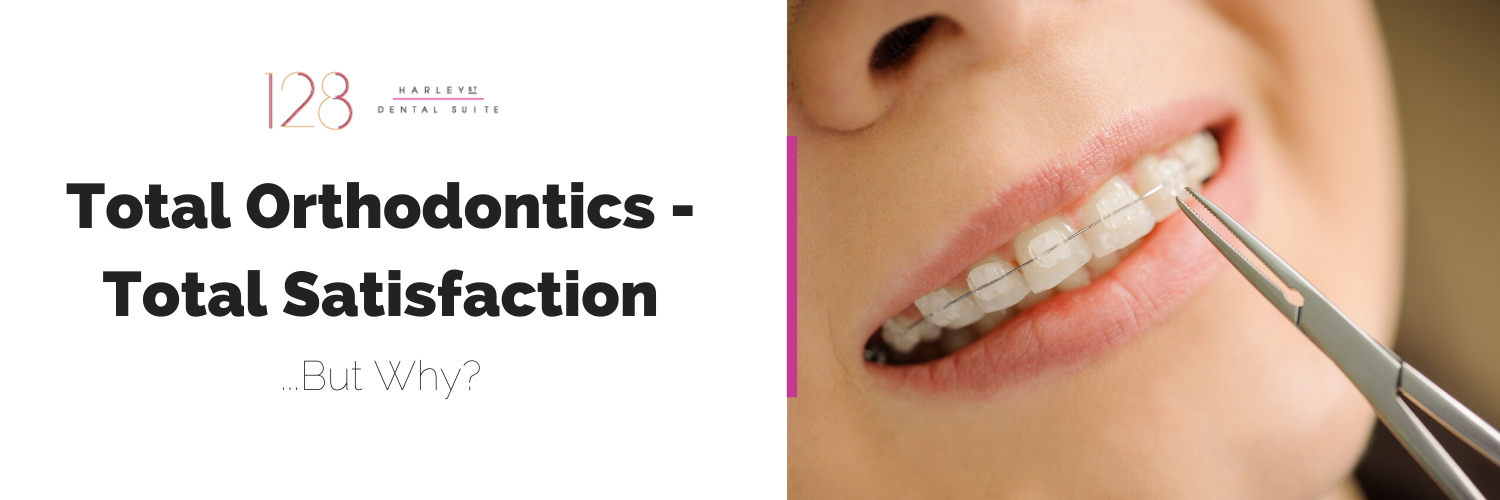
We all know that in order to be exceptionally good at a particular job or task we need to focus exclusively on one thing. Inevitably, trying to be an expert in all things is just not possible. This blog post is dedicated to people looking for total satisfaction, total orthodontics from a total specialist and seeks to explain why this is often the preferred option.
What is a specialist orthodontist?
Did you know that all orthodontists are also dentists but not all dentists or orthodontists?
An orthodontist is a dentist that has undertaken postgraduate Masters level education focusing totally on orthodontic treatments. They understand the biological processes involved in moving teeth, they understand the impact of moving teeth on biting and chewing. An orthodontist has total understanding of the potential problems and pitfalls that can occur when we try to move teeth and bone. A specialist orthodontist is a total expert in moving teeth!
Are braces worth it?
The question here is always to ask, what is it that you want to achieve with your teeth braces? Wherever possible the dental profession like to maintain the integrity of natural teeth, other ways to straighten teeth including veneers, bonding or dental crowns involve either covering your natural teeth or partial removal of natural tooth structure in order to accept a new dental crown or veneer.
Inevitably, there is then a junction between the restoration and the natural tooth and it’s this junction which can become the weak point, if it lets in even the tiniest amount of bacteria then it is possible for decay to take hold.
If you rely on total orthodontics rather than other restorative procedures then you maintain this tooth integrity and therefore have a higher chance of avoiding decay in years to come.
What determines the cost of dental braces?
The cost of braces is made up of a multitude of factors:
- The premises in which you are seen – many practices have convenient locations in the heart of London, such as Harley Street, these premises have exceptionally high rental values which add to the cost of orthodontic treatment.
- This skill and experience of your orthodontist – with any professional service, particularly a private orthodontic practice, you are paying for the knowledge and experience that has led your professional service provider to be able to deliver the highest quality treatment. Going to see a specialist that focuses totally on orthodontics means that:
- Treatment is right first time.
- You get a wider range of orthodontic treatments.
- Treatment is tailored to your individual requirements around outcomes, treatment time, lifestyle and budget.
- You get the assurance that if things don’t go quite as planned your provider is able to work out the best remedial course of action, there is no need to refer you to a specialist to resolve the problem as they are a specialist themselves!
- Adults and children can both be seen saving you time if you wish to visit with your children.
- The direct costs of running a practice, this typically includes:
- Support team, including reception, management and nurses
- Cross infection control – many practices have dedicated cross infection control areas behind the scenes.
- Consumables – many treatments involve the use of many consumables, including impressions etc
- Utilities of keeping the practice warm, let and powered
- Compulsory insurance/indemnity – this can very often run to many thousands of pounds per year.
- Registration with the General Dental Council.
- Maintaining Continual Professional Development and additional training courses – this ensures you only ever receive the very best treatment.
- The cost of the braces themselves – the raw materials for brackets, wires and purchasing of removable appliances such as Invisalign.
How long does orthodontics treatment take?
People often want to know how long it will take for braces to straighten their teeth, having a total orthodontic treatment can run from anywhere between 7 weeks and 2 years, this is sometimes why patients opt for more rapid teeth straightening treatments such as dental bonding or veneers, however we urge you to take caution with these treatments for the reasons mentioned above.
A good specialist in orthodontics will give you an idea of how long treatment will take and then plot your progress at each visit, this can then be tracked in software which allows you to see how far a long your treatment you have come at any given point.
It also allows your orthodontist to modify treatment if the teeth are not moving as initially planned.
Can I wear a removeable braces without consulting dentist?
There are a variety of online clubs which offer removable braces direct to the patient without seeing a dentist.
Buyer beware!
Here’s what to think about if you are considering purchasing orthodontics direct:
- A specialist orthodontist offers other treatments, not just a single type of orthodontic appliance. We don’t force you to have a simple appliance like you see on the Internet, you get a choice depending on your budget, ideal treatment time, lifestyle and clinical situation.
- A dentist can also repair fractured teeth improving the look of your overall smile.
- A dentist will offer follow-up reviews to ensure that your money hasn’t been wasted and to ensure relapse doesn’t occur.
- You will have a dentist’s personal contact details to ensure you have no issues during treatment.
- An orthodontist will never send braces out in the post as they want to make sure that you have an accurate fit and that your tooth movement is predictable and measured.
- An orthodontist will ensure that both themselves and you, as the patient, are happy for signing off any treatment.
What happens if I’m not regular in my braces appointments?
One of the advantages of going to someone that specialises in total orthodontics is that you get the highest level of one-to-one care, so not coming to orthodontic appointments firstly means that you may be wasting your valuable money and not receiving the level of care that you would expect.
If your orthodontist doesn’t see you as often as they would like they are also not able to modify treatment accordingly. This can then impact both your results and the treatment time, meaning you may have to wear braces for much longer then you would ideally like.
Regular appointments will also have checks which you are not able to do at home, example brackets may have worked loose without you noticing. Loose bracket, if left could potentially harbour harmful bacteria underneath and lead to an increased risk of tooth decay. At your regular braces appointment your orthodontist will be able to spot the loose bracket and bond it back into place. Another problem with an unnoticed loose bracket is that it won’t be doing the job it is there to do and could therefore extend treatment times.
Summary
A total orthodontic treatment is a total investment in yourself and your smile. Visiting a specialist orthodontist gives you the assurance that you’ve got the most appropriate type of braces, offered with the highest level of skill and delivered to give you the ultimate smile.
Management of thumbsucking, is a thumb guard needed?
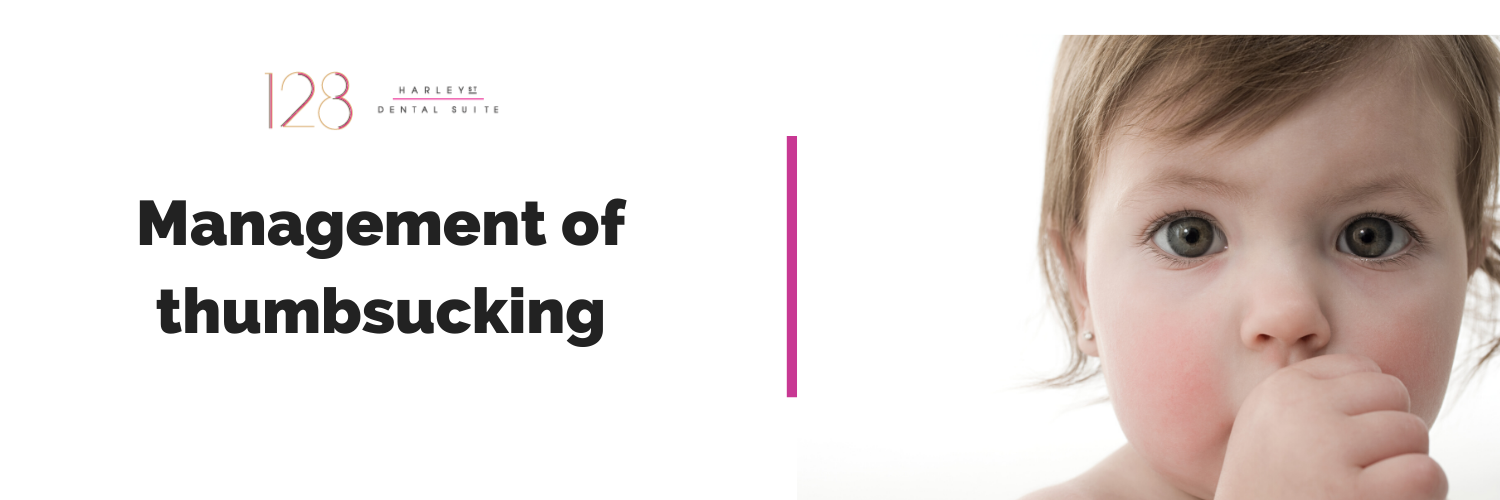
Many parents worry about their babies and/or children thumb sucking, is this a valid concern to have? Are there any problems with a child or baby sucking their thumb? In this blog post we take a look at some of these questions.
Baby keeping thumb in mouth – is this a problem?
There is a natural tendency for very young babies to feel comfort from having something in their mouth, this is why many babies can develop a habit of sucking a thumb or finger, in fact babies have been photographed and scanned doing this in the womb!

As babies begin to develop it, it is a normal developmental stage to begin oral exploration. The mouth is particularly sensitive and when babies put everyday objects in their mouth it allows them to begin to discover the textures and tastes of the world around them.
When babies put objects in their mouth it can also be a sign that the first teeth are beginning to come through.
Is this a problem?
A baby that keeps their thumb in their mouth can be a problem as the constant pressure on the roof of the mouth, which is caused as the baby sucks, can begin to move the bone.
If this habit continues through into early, mid or even late childhood the bone will continue to move with this pressure. It’s a very similar process to orthodontics, orthodontic braces work by applying pressure to the tooth which moves them through the bone, when a baby sucks very hard the pressure is simply applied to the bone directly by their thumb.
This can end result in an anterior open bite where the front teeth don’t meet leading to dental work later on in life.
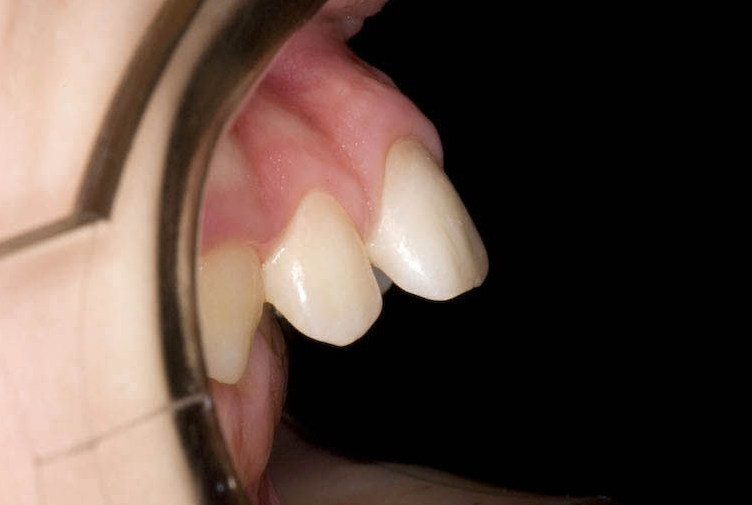 If your baby or child consistently sucks their thumb it may be worth considering providing an alternative appliance which allows them to soothe themselves without putting the pressure on the bone.
If your baby or child consistently sucks their thumb it may be worth considering providing an alternative appliance which allows them to soothe themselves without putting the pressure on the bone.
Toddlers fingers in mouth constantly – is this a problem?
This has the same effect as babies putting fingers and thumbs in their mouth, in and of itself it is not a problem however if the pressure on the roof of the mouth is such that the bone moves it can cause orthodontic problems later on in life.
If your toddler has teeth coming through then the pressure of the fingers in their mouth can move the baby teeth. As the baby teeth move the bone will also move which will in turn move the permanent teeth which are yet to come through.
If this habit continues swallowing and speech can also be affected as the bone moves in the oral environment.
How to fix overbite from thumb sucking
Many cases of overbite, including those caused by thumbsucking can be successfully treated using most types of braces including orthodontic fixed appliances (on the outside of the teeth), Invisalign® or other type of clear aligners or braces on the inner aspect of the teeth; also known as lingual braces such as Win GmbH or Incognito™.
If you believe that your child has been sucking their thumb and moving the bone then it is recommended that you visit an orthodontist as early as possible, even as young as 5 years old. Early intervention orthodontics can help to assess the likelihood of problems developing later on in life and then help to prevent them throughout the developmental stages of your child and as they grow.
Management of thumb sucking
It is possible to help a child to stop sucking their thumb with 2 key areas:
- preventive therapy
- appliance therapy
Preventative therapy includes:
- Painting the nails with a bitter or foul tasting liquid
- Wearing a finger guards over the hands including gloves
- Making the child where a thumb sucking guard
- Putting the child into a long sleeved gown so they can’t get access to their thumbs or fingers
- Age appropriate discussions and explanations with the child and positive re-inforcements such as a sticker chart
Appliance therapy includes:
- Fixed appliances to break the habit by making the habit as difficult as possible to continue
- Removeable appliances to break the habit by making the habit as difficult as possible to continue
Reference: Shetty RM, Shetty M, Shetty NS, Deoghare A. Three-Alarm System: Revisited to treat Thumb-sucking Habit. Int J Clin Pediatr Dent 2015;8(1):82-86
Do thumb guards work?

Yes. They can work incredibly well to prevent thumbsucking so long as it is used in conjunction with other techniques. A child could get incredibly frustrated if they are unable to soothe themselves by sucking her thumb. This could lead to creation of other undesirable habits or they could move the habit to fingers which are not covered by the guard.
Positive reinforcement is recommended to ensure that each day or night that the child goes without sucking their thumb is recognised by the parent and that the child feels good about themselves and their achievements. A sticker chart can work really well for this to help the child assess their progress and be rewarded when they stop their finger and thumb sucking.
Should I use a pacifier (dummy) to replace a thumb
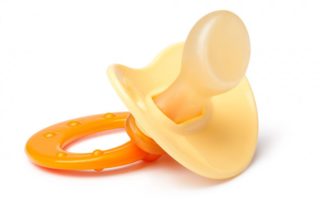
It is recommended that children do not have dummies beyond the age of about 4 or 5. if you feel you would like to switch your child over to using a pacifier instead of their thumb then it is recommended that an orthodontic dummy is used.
if a decision is made to replace thumb and finger sucking with a pacifier then it is recommended that an orthodontic pacifier/dummy is used.
These orthodontic dummies are shaped to prevent the excessive forces which are applied to the roof of the mouth during regular thumb sucking. However, they do not completely eliminate these forces so even orthodontic dummies should be used with caution.
Summary
Most orthodontists are agreed that thumbsucking, if it continues in to childhood can indeed cause long-term orthodontic problems for the children as they grow into adults. It is therefore recommended to try and break the thumbsuckers habit as as soon as possible to avoid future problems.
Crossbites: the best long term treatment
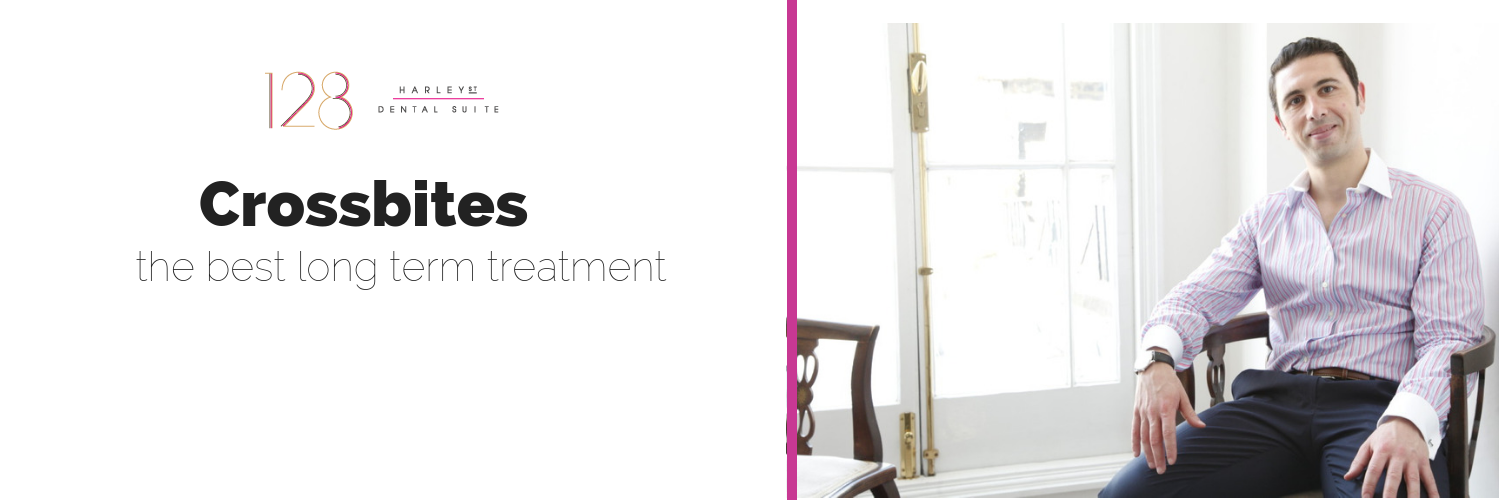 In a study in 2014 Bell and Kiebach observed that between 5% and 8% of children in the age group 3 to 12 years old had a crossbite. A further study conducted by Gungor et al in 2016 noticed up to 53.6% prevalence of crossbite in permanent dentition!
In a study in 2014 Bell and Kiebach observed that between 5% and 8% of children in the age group 3 to 12 years old had a crossbite. A further study conducted by Gungor et al in 2016 noticed up to 53.6% prevalence of crossbite in permanent dentition!
a normal dentition the top teeth in both the posterior and anterior regions will align on the outside of the lower teeth. In a crossbite situation the lower teeth will set on the outside (cheek side) of the top teeth.
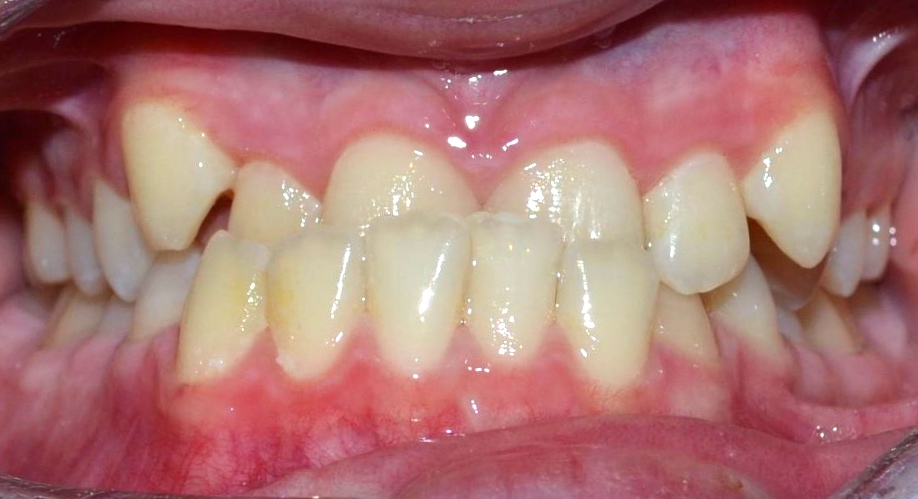
The following video shows what the teeth look like with a posterior crossbite.
Crossbites can have dental or skeletal causes. If the cause is dental then it will just be the teeth which are in the wrong position, if the cause is skeletal this means that either the upper jaw is underdeveloped (superior retrusion) or the lower jaw is overdeveloped (Inferior protrusion), in short this means that either the upper jaw is too small or the lower jaw is too big.
Why should a crossbite be corrected?
Your jaw is an incredibly complex mechanism which effectively works as a ball and socket joint hinge, it is cleverly designed to hinge equally from both sides allowing us to chew in a circular motion rather than just up and down (like a crocodile!).

Because we have a joint on either side of our head this means we can hinge from either side and that circular movement can have central pivot point on either side of our head, depending on which way we are chewing. All of this means that the alignment of the teeth is incredibly important to maintain the integrity of not only the jaw joint itself but all of the supporting muscles.
If the teeth interfere with the movement of the jaw joint then this can result in headaches and pain. This pain can migrate down the head, face and neck as all of the muscles are interconnected.
A crossbite will more than likely mean that the teeth interfere with this smooth circular movement that the jaw would naturally like to undertake as it pivots around the jaw joint. Therefore correcting a crossbite will not only allow you to chew and eat more effectively but reduce the likelihood of headaches and additional muscle pain.
How can crossbites be corrected?
The key to correcting a crossbite is understanding the cause, is it dental or skeletal? Depending on the cause will likely effect the way your treatment is carried out. Simple dental crossbites may be able to be treated by your regular dentist using a treatment such as Invisalign however more serious crossbites or skeletal crossbites will more than likely need the skills of a specialist orthodontist and more advanced orthodontic braces.
Using palatal expansion to correct a crossbite
If your upper jaw is underdeveloped meaning that the teeth on the top are on the inside (tongue side) of your lower teeth then having the upper arch expanded will push the bone and top teeth further out therefore realigning all of your back teeth.
The simplest form of palatal expansion is an orthodontic appliance with a little screw on the inside. Each day the patient turns the screw a small amount (determined by the orthodontist), this puts the teeth and arch under constant pressure and gently pushes the bone and teeth further out.
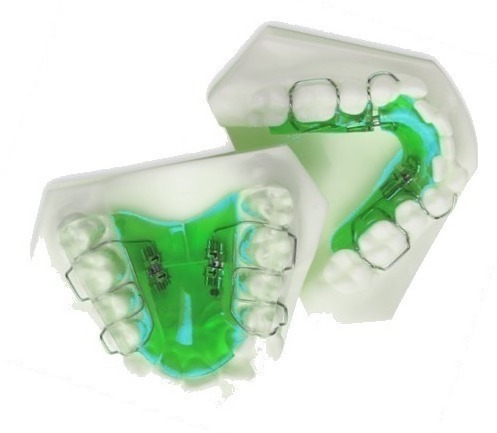
The treatment is most commonly used in children during their developmental years as this then works in conjunction with their normal development and growth. Arch expansion can also be used in adults however it is often more uncomfortable and can take longer.
Once the expansion has been undertaken to correct the skeletal underdevelopment then further orthodontic treatments can be undertaken to move the teeth into the correct dental alignment.
Using a Quad Helix for correcting a crossbite
This type of orthodontic device has the same outcome as a regular palatal expander however it is fixed and cannot be removed by the patient. A couple of bands are attached to the molar teeth and then up to 4 active helix springs are used to widen the arch and therefore make room for crowded teeth or expand the arch to correct the crossbite.
Common questions and answers about correcting a crossbite
Can my orthodontist fix my crossbite underbite with braces?
Yes, a crossbite under bite can be corrected with orthodontic braces, more competent dentist with a special interest in orthodontics may be able to do this using Invisalign however more complex treatments are only available from specialist orthodontist.
How long will it take for braces to straighten my teeth?
It depends on exactly what type of treatment you require. Very often with a crossbite an arch expansion device is required to move the bone first.
A Quad Helix device will usually be worn for 3 to 6 months, after this time orthodontics may be used to correct the alignment of the teeth, this can take an additional 3 to 6 months depending on the orthodontic treatment used.
Is perfect teeth absolutely possible with braces?
This all depends upon your definition of perfection, however usually the answer is yes. This is another reason that a specialist orthodontist is one of the best people to visit for your orthodontic treatment. They will be able to give you a detailed analysis of the final result and let you know of any compromise before you begin treatment.
This is often achieved with detailed study models as well as digital imaging to give you an idea of the final result.
Do I need braces if I have a palate expander?
Usually you will require some form of braces after you have had a palatal expander. This is because the expander simply moves the bone and teeth to a further out position, more accurate orthodontic treatments are then required to move the teeth into the exact position required so that your the teeth meet together in the required manner.
What is the best age to get a palatal expander?
Treatment should ideally begin whilst your child is still growing, around the age of 10 is ideal. This then allows us to expand the arch during the growing process, it is much easier in children to expand and arch then it is with adults.
